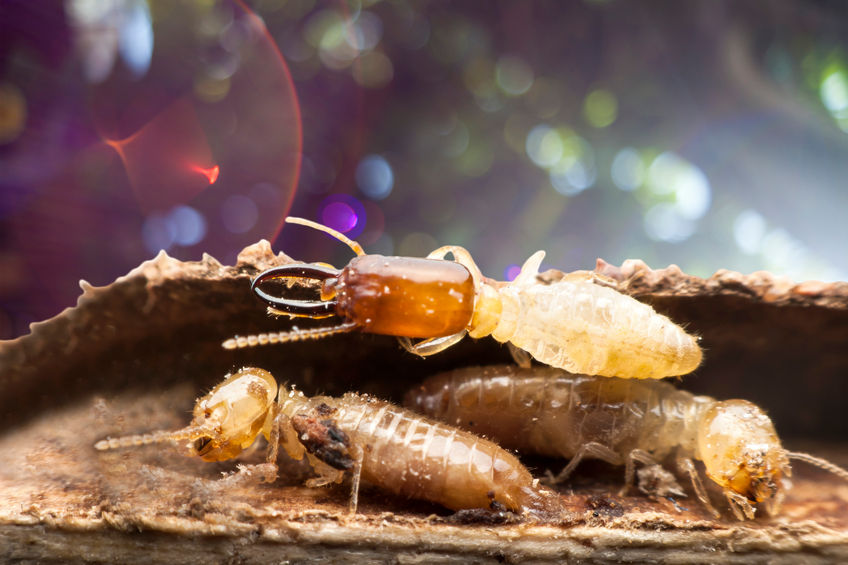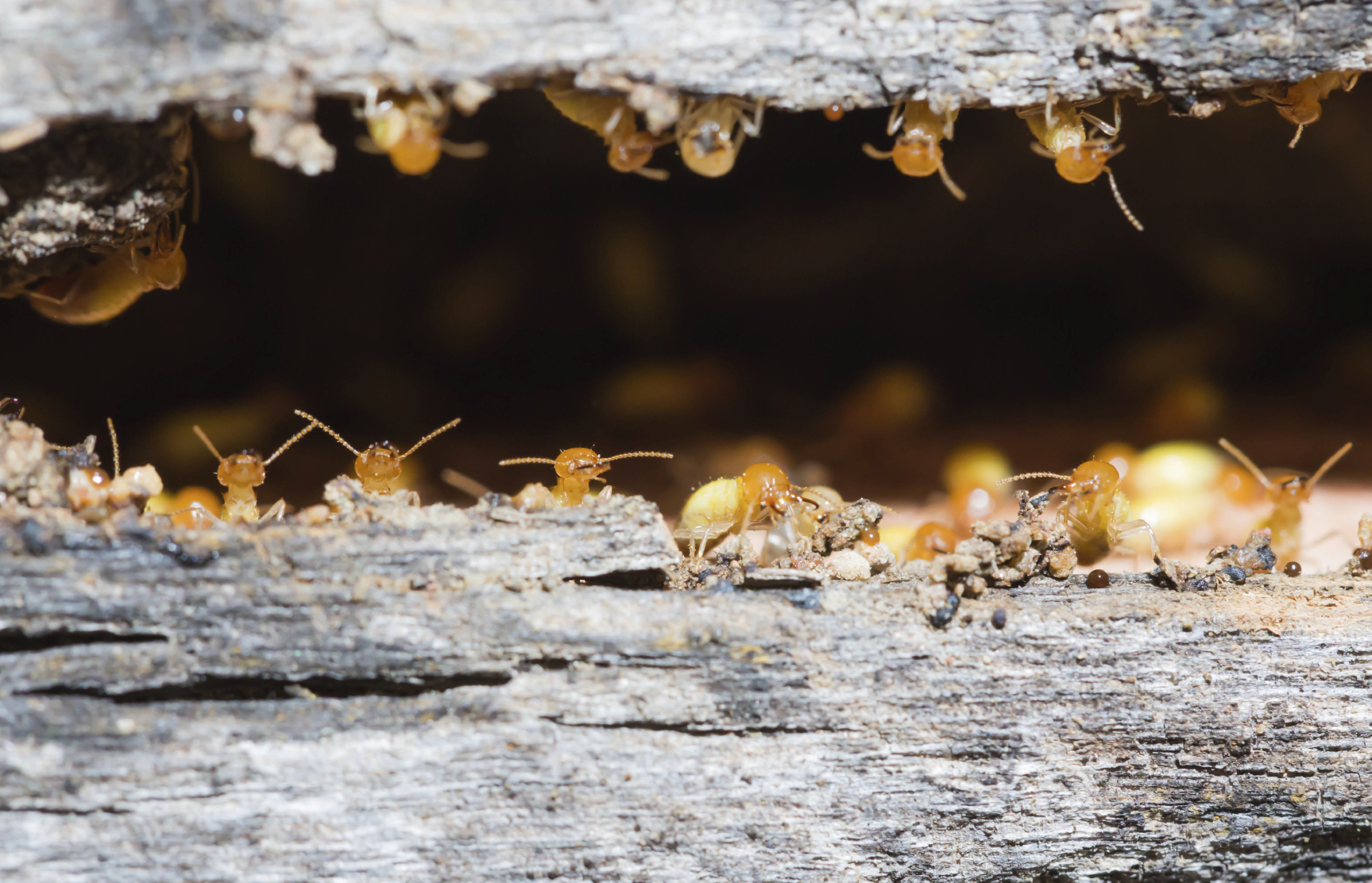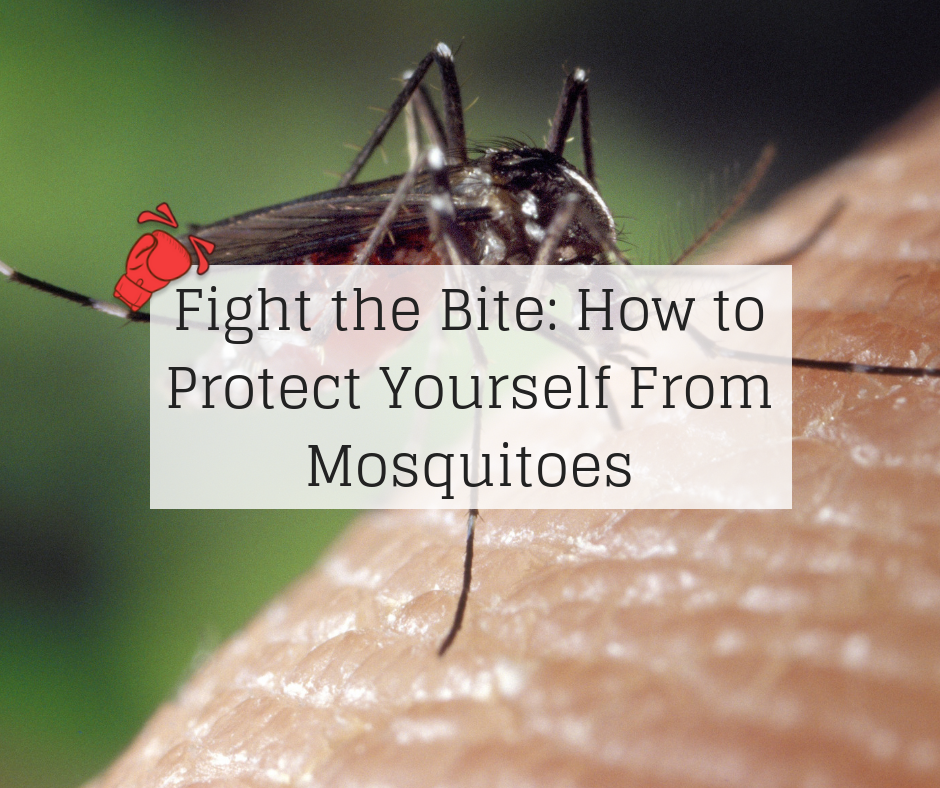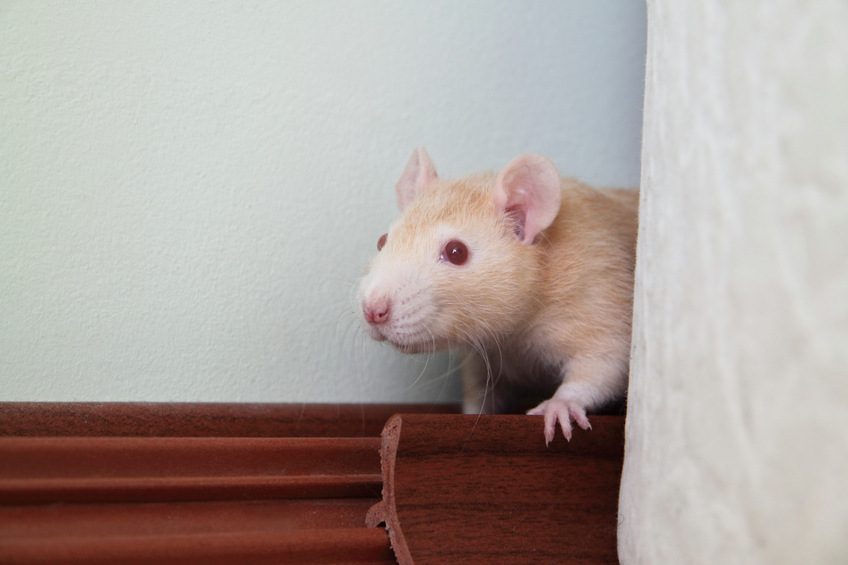
Termites: Causes & Warning Signs of an Infestation, and How to Deal With One
“At one time or another, almost every building in the area gets termites — it’s a matter of when,” says Arthur Katz, President of Knockout Pest Control.
Subterranean termites are one of the most dangerous pests in the United States, and unfortunately, they inhabit New York!
The reason these pests are so dangerous is that they cause billions of dollars worth of damage every year.
Knowing their profile and what they’re all about can help you prevent an infestation or remove them from your home (or business) — and knock them out!
Characteristics of Termites
- Size: ⅛ inch
- Color: Shades of brown; white wings
- Distinguishing Characteristics: Long and narrow body, antennae, 6 legs; workers and soldiers are wingless while swarmers have wings
- Whereabouts: Underground or within wood
- Seasonality: Active all year: swarm during spring and early summer
- Diet: Wood, decomposed plants, feces, carpeting, etc.
- Communication: Use of pheromones, scent trails, and vibrations (via banging their heads against tunnel walls)
The Life Cycle of Termites
Within a colony of subterranean termites, there are three roles: workers, soldiers, and swarmers.
Workers will maintain the nest and forage for food, soldiers will protect the nest from threats, and swarmers are the reproductives.
- Fun Fact: Worker and soldier termites are either underground or within a wooden structure their whole lives. Therefore, most of them will never develop functional eyesight.

Once temperatures reach around 70 degrees, swarmers will emerge and begin mating in new locations away from the original colony. After a male and female swarmer mate, the male will break off its wings to signify they are a couple and this becomes the start of a new colony.
It can take usually three to four years for a new colony to fully mature, but they do a phenomenal job of staying out of sight, so it can be very difficult for homeowners to know if their home has become infested.
- Fun Fact: Termites and cockroaches are both predecessors of a common ancestor that lived in the Cretaceous period, 300 million years ago. The oldest known termite on record was preserved in amber and dates back 100 million years.
When Are Termites Most Active?
Swarming season in the New York area generally runs from late March through early June. That’s when billions of reproductive subterranean termites take flight from their colonies in search of new mates so that new colonies can be born.
Swarming is an obvious sign of a termite problem, but not seeing a swarm does NOT mean you’re termite-free. Termites are active all year long so you might already have an infestation without knowing it.
Why Worry About a Possible Termite Infestation?

Did you know termites cause over $5 billion in property damage every year?
That’s more damage to wooden structures than all of the hurricanes, tornadoes, and house fires put together! The unfortunate part about being infested by termites is that the damage is not typically covered by most homeowners insurance policies.
Termites will usually remain buried in the wooden structures they infest. This is what makes them so dangerous. You might not even realize you have an infestation of termites until years down the road when the damage has already been done.
What Do Termites Typically Infest?
Having termites in your home and on your property is like hitting the reverse lottery — you lose money and have to work (at getting rid of them).
Knowing what they will typically infest will help you avoid developing an infestation.

Inside Your Home
When it comes to most houses, their structures are usually made from wood. This means your entire home can be at risk for a termite infestation. This includes walls, floors, roof sheathing, stairs, etc.
In addition to the actual structure of your home, wooden furniture and finishings (such as handrails and molding) can also be a potential snack for a termite infestation.
Outside Your Home
- Wooden Fencing – Over time, wood fencing can begin to split, allowing moisture inside. If having wood filled with moisture near your home wasn’t bad enough, realize that this wood fencing will usually surround multiple sides of your home. As a result, your property has an increased chance of being infested by termites.
- Wood Mulch – This popular landscaping material is often used near walkways close to the house. Unfortunately, termites will feed on this wood and use it for cover when it’s wet. Wood mulch is great for retaining moisture, so this is a termite’s dream material! If you use this type of mulch on your property, do not use it too close to the base of your home.
- Stacked Firewood – Whether you’re a fan of fire pits in the summer or you have a wood burning stove for the winter, chances are there is a stack of firewood on your property. Avoid stacking firewood against your home so you don’t lead termites directly to the house. Instead, stack firewood at least 20 feet away from the house, preferably off of the ground on a raised slab.
- Unnecessary Deadwood – There is no need to have tree stumps, fallen tree limbs, and any other wooden debris on your property. Walk around and pick up any fallen branches and debris, then call a professional to remove any tree stumps you may have. You’ll decrease your risk of termite infestations and your property will look infinitely better!
- Wooden Construction – Do you have a wooden deck or shed on your property? If either one sits atop the soil, termites living within the soil can easily infest these structures. When you decide to add one or replace a current one, opt for pressure-treated wood. This wood is termite resistant and will last longer than the average wooden structure. If you still decide on a wooden deck or shed, remember to lay down a concrete slab first to create a level of separation between the wood and the soil.
- Clogged Gutters – Make it a point to clean your gutters when they become clogged, especially throughout the fall. Wet leaves and sticks can cause blockages which will then lead to pooling and overflowing water, followed by eventual water damage to your roof, attic, and siding (if you have cedar siding). Having damp wood make up the structure of your home is an open invitation for termites.
Warning Signs of a Termite Infestation
If you’re walking around your home trying to find out if you have a termite infestation, there are a few common warning signs that point to yes.
- A Hollow Knock – The wood in your home might be smooth and look untouched on the surface, but the inside is a whole other story. You normally won’t ever see termites out in the open, dining on a nice piece of wood — they eat from the inside out. Knock on a piece of wood; if it sounds hollow and isn’t supposed to be, you may have an infestation of termites.
- Cracked Wood – Termites are small and can fit through the smallest of cracks and holes. If you’re suspicious of any termite activity, then check your home for cracks — especially if you notice paint is beginning to chip away. Seal all cracks and holes immediately to prevent termites from re-entering your home.
- Mud Tubes – Complete a visual inspection of your home, keeping an eye out for specks of mud. What looks like mud splatter is actually a collection of mud tubes created by the termites. Subterranean termites will build mud tubes to create a moisture-filled environment so they can continue to eat away at your home. If you see these mud tubes, termites are close by…
- Winged Things – Since termites eat wood from the inside out and stay hidden in the wood they infest (and the soil in the earth), you’ll never see one casually walking around. However, you will see reproductive termites with wings swarming throughout the spring. These “swarmers” will fly around until they find the perfect area for them to set up a new colony. Once they begin to mate and build a new colony, the males will discard their wings. So if you haven’t noticed any swarmers flying around, keep an eye out for any discarded wings.
How to Deal With an Existing Termite Infestation
![]()
Sentricon to the Rescue!
Bait and monitoring systems are the most optimal way to rid your home of termites — the most popular and effective being The Sentricon System.
This innovative and Green technology eliminates termite colonies — including the Queen! This gives your home or business long-term protection from termite problems.
![]()
How the Sentricon System Works
Each bait station is placed in intervals around the property with treated bait inside. Termites who stumble upon these bait stations will then carry the treated material back to the colony, where it will poison the entire colony — including the Queen.
This process does take time, and like other treatments, it will not work overnight. A licensed pest control professional will check on these traps periodically to refill these bait stations and inspect your property for you.
- The Sentricon System is registered by the EPA under the Reduced Risk Pesticide Initiative.
Rebuilding Your Home
Just because your home has been damaged by termites, doesn’t mean you can go ahead and start fixing it. All damage should be left until the infestation has been managed — unless you need to fix support beams and other important structural pieces.
Once a professional pest management expert has taken care of your termite problem, then you can start the rebuilding process. Replacing old wood with new wood in the middle of a termite infestation can be counterproductive.
How to Prevent a Termite Infestation

The best way to prevent a termite infestation is to know what attracts termites to your home and property, and then remove those things. Half the battle is knowing what brings these pests out of the soil and into your home.
From there, you should also know what the possible warning signs look like, so you can catch the beginnings of an infestation before it grows into something that will cost you a lot of money to rebuild.
On top of being as knowledgeable as you can be, you can also contact your local pest management professionals to have them inspect your property. From here they can explain further prevention methods, like installing the Sentricon System proactively.
—
We know this might be a long read, but this is the Holy Grail when it comes to information about termites.
Bookmark it. Print it. Memorize it. Do whatever pleases you most.
But as a homeowner, make sure you know all of this information front to back if you want to keep termites far away from your home, or if you need to know on how to get them out!
When you need a pest management professional to inspect your property and offer you termite solutions, be sure to contact Knockout Pest Control!
We’ll start lacing up our big, red gloves…



